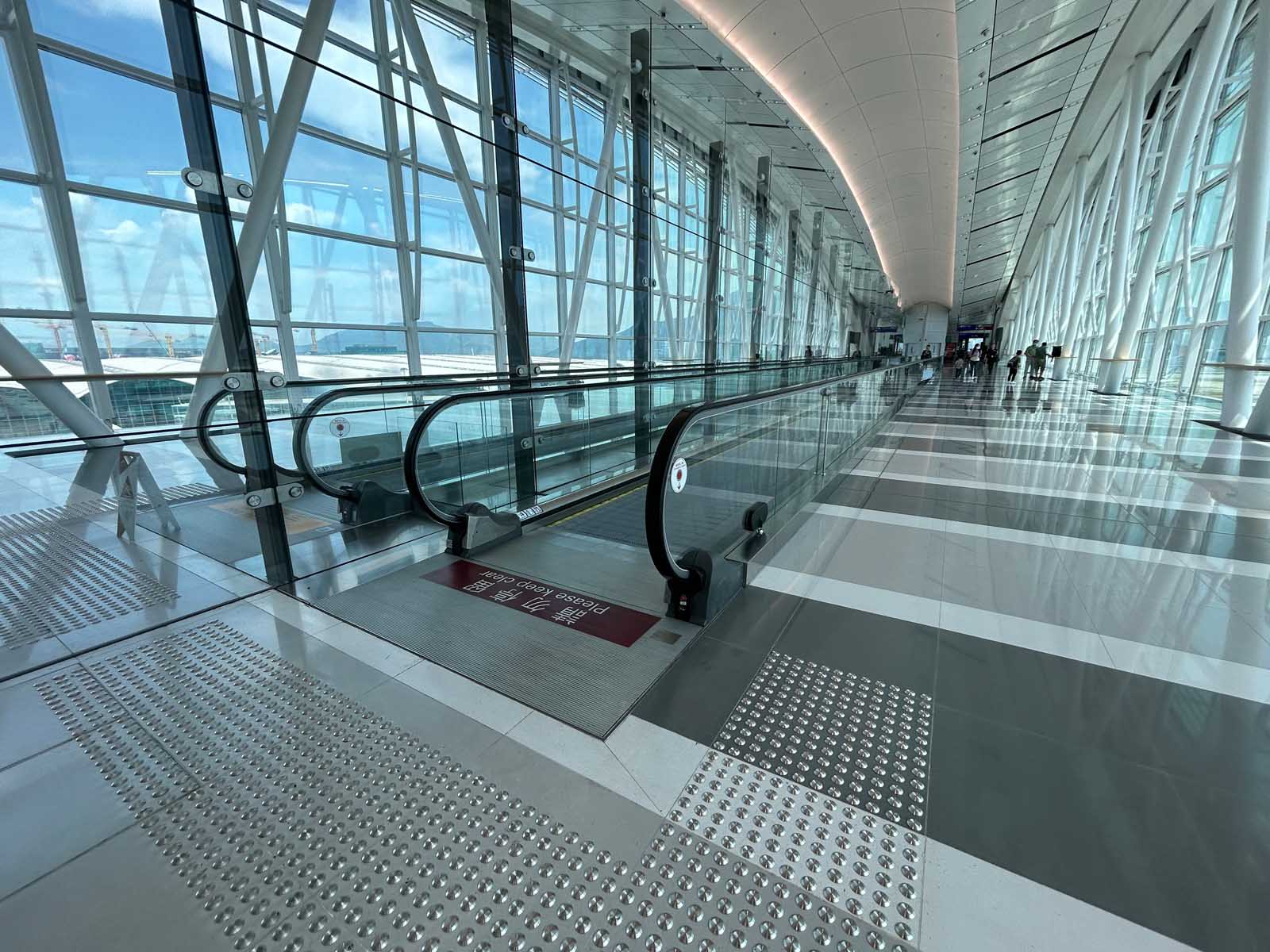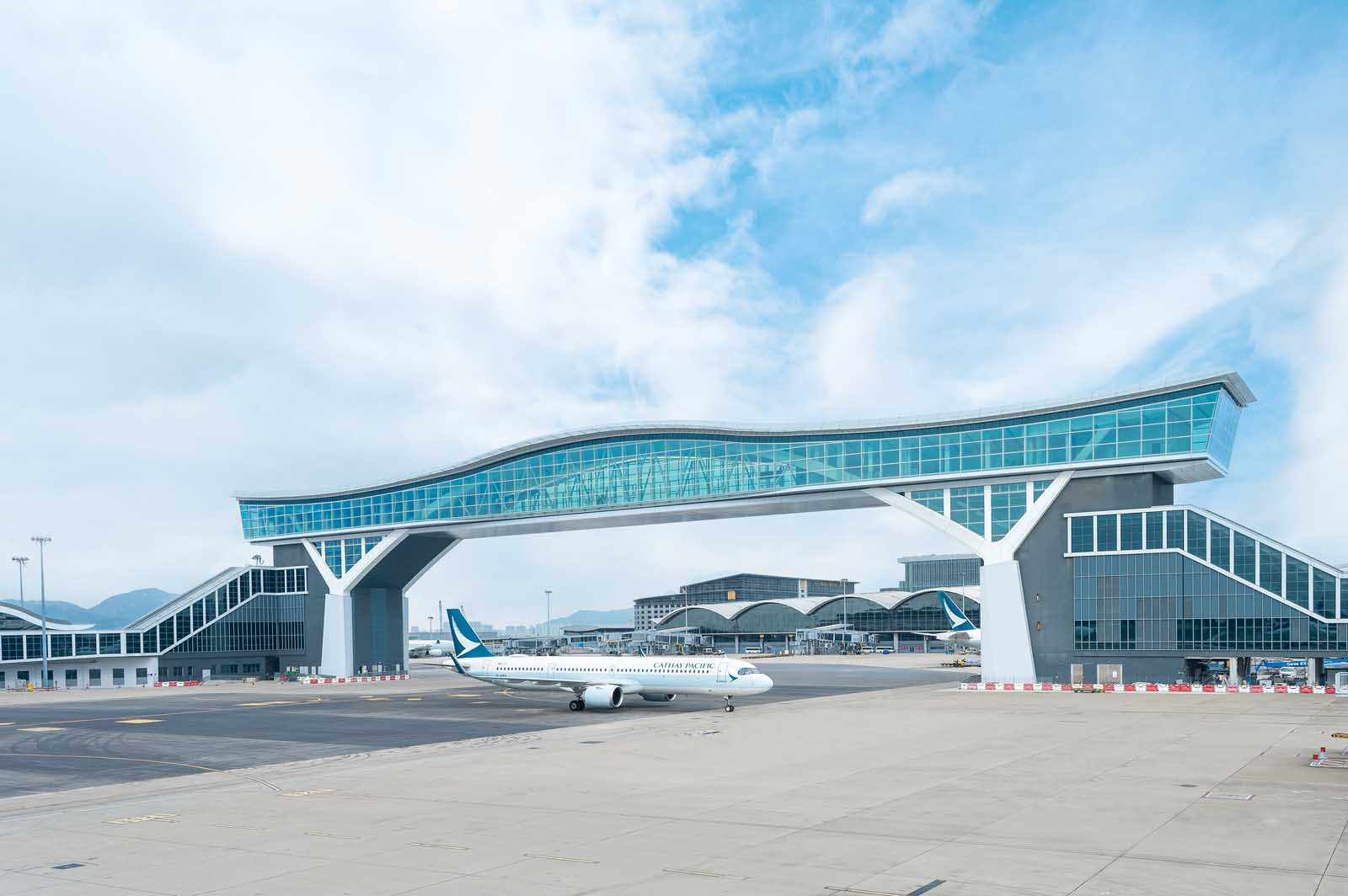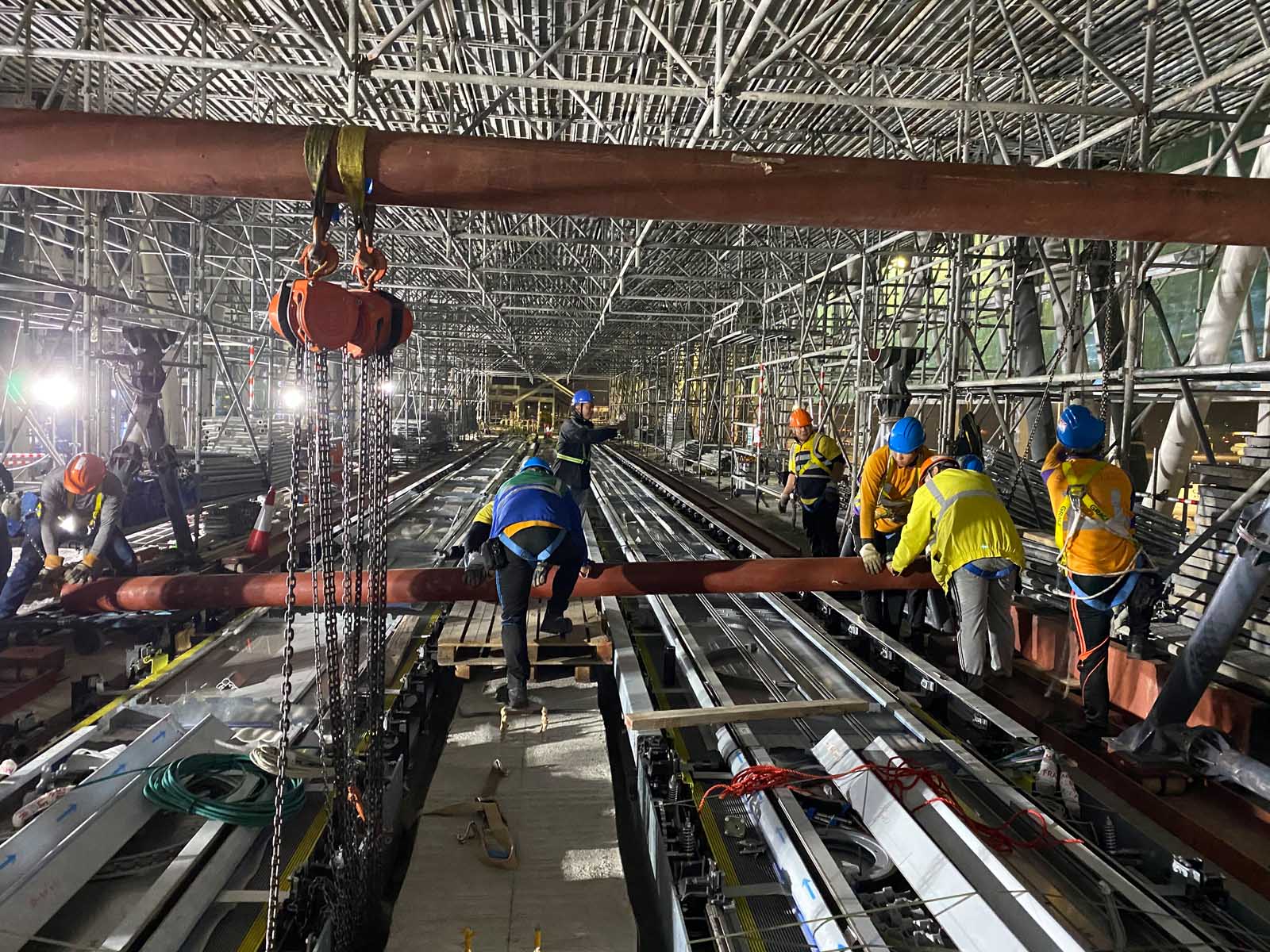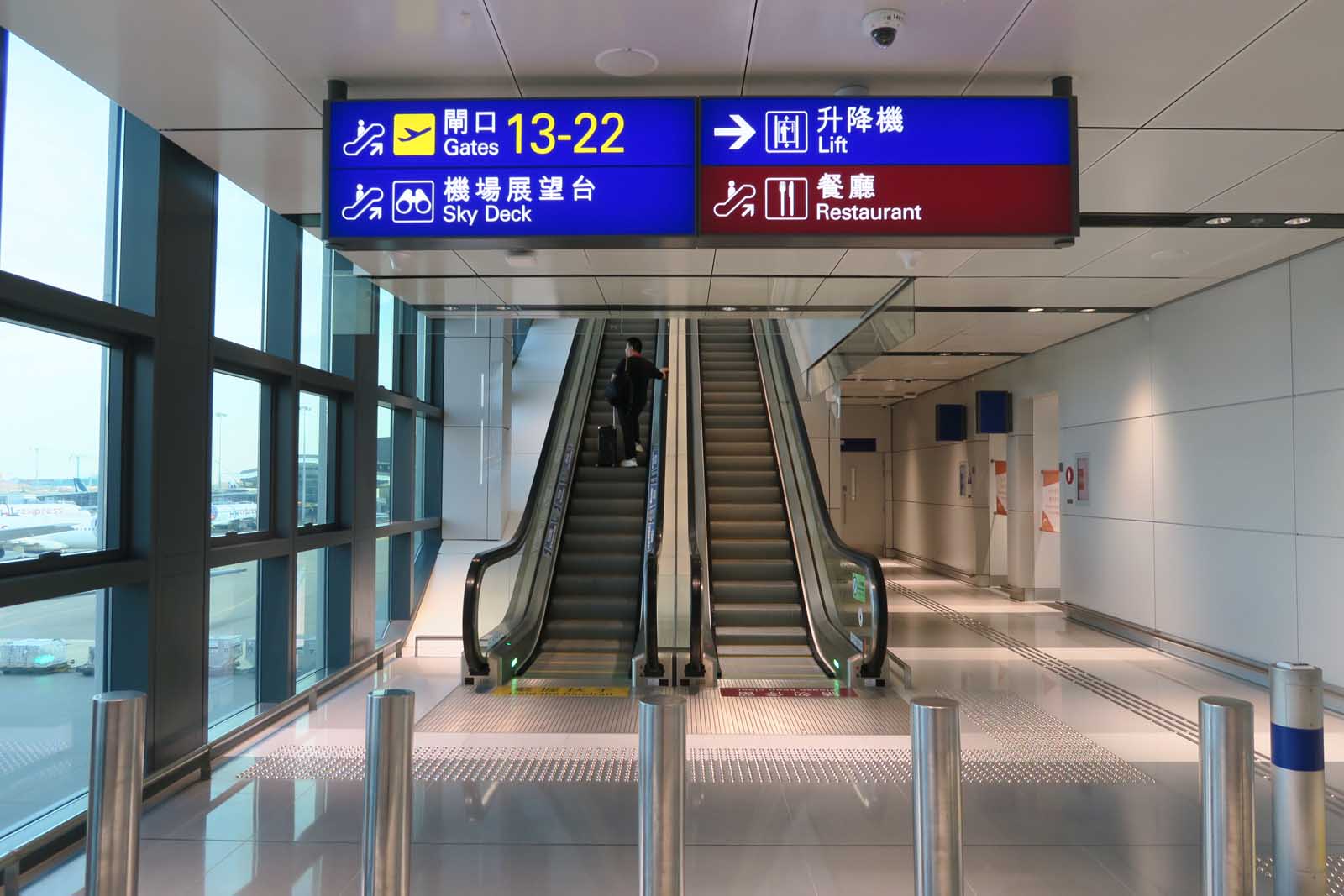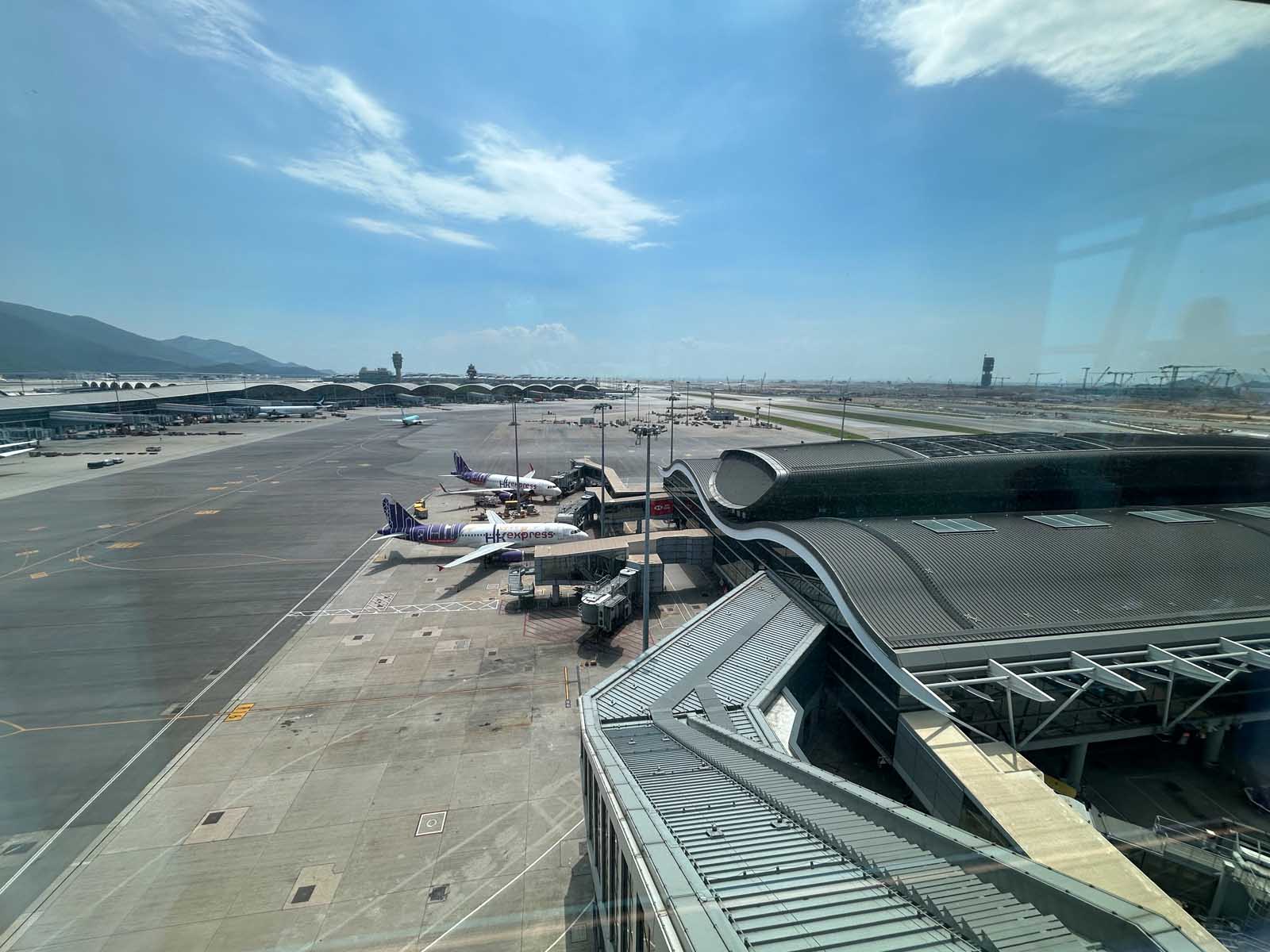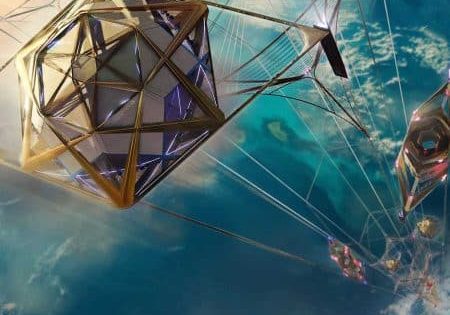Simply Spectacular
Mar 1, 2024

At HKIA, a TKE team realizes unique VT system serving the world’s longest air-side skybridge.
Twenty-six years ago, one Hong Kong airport said goodbye and another said hello: The Kai Tak Airport — known by both pilots and travelers for requiring hairpin turns and necessitating a hair-raising descent as it wove through the towers and terrain of downtown Kowloon — closed to make way for the Hong Kong International Airport (HKIA) on the island of Chek Lap Kok approximately 33 km to the west. While the old airport certainly offered its thrills and held a fond place in many hearts, the HKIA has since made a name for itself with its high-tech digital displays, fine dining — and now — the world’s longest air-side skybridge — part of a HKD9 billion (US$1.15 billion) airport upgrade. At HKIA, some of the thrills come as people on the glass-bottomed skybridge watch as the world’s largest passenger aircraft — the Airbus A380 — passes beneath their feet.
Travelers and members of the public come in droves to see and experience the skybridge, says TKE Hong Kong Managing Director David Ng. Outfitted with a custom TKE vertical-transportation (VT) system that includes two iwalks, 20 heavy-duty escalators and 13 machine-room-less elevators, the 200-m-long skybridge is 28 ft above ground with a span in excess of 130 m. Observing that TKE Hong Kong (HK) is a longtime, trusted partner of HKIA, Ng describes the skybridge as a “spectacular new landmark for Hong Kong, as well as the airport.” TKE HK is proud to have been an integral part of what was a vast undertaking that took more than four years, from engineering to delivery in November 2022, Ng says. The TKE HK team worked alongside general contractor China State Construction Engineering Corp. Ltd. and architect AMQ Ltd. to get the job done for client HKIA.
Before TKE equipment could be installed, the steel, weatherproof bridge structure that connects HKIA Terminal 1 (T1) and the North Satellite Concourse had to be built. The bridge consists of three precast steel and glass sections that together weigh more than 5,000 t. After being manufactured in Zhongshan, mainland China, the segments traversed nearly 60 km over water on barges to the West Quay on the island of Chek Lap Kok in western Hong Kong.
Ng points out that the technology allowed engineers to visualize the system from a passenger’s point of view. From West Quay, the segments were delivered over land to the assembly yard in the Midfield area of HKIA. Land delivery was carried out over three nights and necessitated closure of one of the airport runways. Then, the precast segments were assembled in the assembly yard and the main bridge structure delivered more than 3 km to its final position between T1 and the North Satellite Concourse. This portion of the job commenced at midnight in fall 2022 and took 7 h to complete.
TKE Hong Kong is proud to have been an integral part of what was a vast undertaking that took more than four years.
For the TKE VT equipment and moving walks, engineering took place from September 2018 to September 2019, followed by fabrication in TKE’s Zhongshan factory. Installation then occurred in the first quarter of 2022. Ng says TKE HK manpower included 15 direct staff and 20 installation partners, as well as a TKE installation expert from Spain. Challenges were plentiful, he says, and included COVID-19 pandemic restrictions, inclement weather and working around busy airport operations. In the end, he says, perseverance was worth it. “It’s a one-of-a-kind project for our company, as well as locally,” Ng observes.
Spectacularity of the skybridge notwithstanding, the elevators, escalators and especially the moving walks, have the practical purpose of enhancing accessibility at HKIA. The VT system is key in cutting travel time in half — saving up to 20 min per trip[1] — compared to taking a shuttle bus, Ng points out. Each of the two iwalks is 45 m-long and travels at 0.6 m/s, with automatic speed reduction to 0.2 m/s when traffic is light to save energy.
A glass wall separates the two iwalks — one inbound and one outbound. Compared to running a shuttle bus, the cost of maintaining the iwalks and other VT equipment is also lower, Ng says. And compared to other moving walks, the iwalk features significantly reduced equipment depth, which results in easier packaging and more versatile installation options, Ng observes. Each iwalk consists of 10 sections: six standard sections, one starting section, one ending section and two special sections. Each of the 10 sections were packaged and arrived on-site in three separate packages. TKE HK provided data showing the contrast of required pit depths between an iwalk, a typical TKE moving walk and a moving walk manufactured by another OEM, which are, for the lower section, 1,250 mm, 1,140 mm and 380 mm, respectively. Compared to a typical TKE moving walk, this translates to 870 mm, or 69.9%, in pit-depth savings.
The iwalks were pre-installed in the main structure before delivery and lifting of the skybridge. Remaining testing and commissioning works were done after fixing the bridge to both ends of the terminal and concourse. Project challenges shared by Ng include:
- Busy airport operation that meant only limited space could be vacated during construction. No interference to the airport’s daily operation was permitted.
- Coordination between suppliers of precast segments, clients and different marine authorities was critical. Tides, inclement weather and limited quayside facilities were overcome to realize marine delivery.
- All delivery works were carried out during the closure of a runway at night. There was no impact to the runway.
- High precision was required for component design, prefabrication, welding, delivery and erection. Allowable construction tolerance was minimal.
TKE has the maintenance contract for the HKIA skybridge VT equipment, which, as of press time, was in perfect working order, Ng says. Including the skybridge, TKE HK has provided more than 140 pieces of VT equipment at the airport, including elevators, escalators and moving walks. In addition, passenger boarding bridges provided by TKE Airport Solutions serve passengers at various HKIA locations.
Upcoming TKE installations at HKIA include 97 elevators for the expansion of Terminal 2 and 83 elevators for the third runway concourse. Ng says:
“We are a very trusted partner of HKIA. Theirs is a big VT portfolio that we support to provide smooth transportation within the airport. Hong Kong is a very competitive market. HKIA chooses to team up with us and give us the work, not only to maintain TKE equipment but other brands of equipment, as well. Another reason we were chosen for the skybridge project is our expertise in modular construction, which is becoming a trend in Hong Kong and across the globe.”
The TKE iwalks — a key component of the skybridge — serve to help establish Hong Kong as a smart city, Ng observes, adding that we will see more and more skybridges (served by moving walks) in the future. They will not only be in airports, but linking buildings high in the sky. “Our iwalks could be a very critical solution to enable smart cities,” Ng says. “We expect to see some tenders coming up in the old Kai Tak area, location of the old Kai Tak Airport.”
The Kai Tak Airport site is now a busy cruise terminal, and HKIA continues to earn accolades for offering an exceptional traveler experience — an experience that now includes the skybridge and its TKE iwalks.
The area around the old airport has begun a transformation that includes skyscrapers: The 48-story, 207-m-tall Airside (a mixed-use tower designed by Snøhetta and served by VT equipment from a variety of manufacturers) was completed in 2022. Ng says it will no doubt be joined by other towers soon. He observes:
“As Hong Kong strives to catch up with other major cities to become a true smart city, we’ll see more interconnected buildings. Using moving walks such as iwalks on these bridges could be critical to enabling smart cities. Providing a sustainable means of transportation to connect areas and properties is something that has great market potential for TKE.”
Reference
[1] Scott, Mathew, “Hong Kong Airport’s Latest Innovation Offers a View to a Thrill,” National Geographic for HKIA, August 23, 2023.
Get more of Elevator World. Sign up for our free e-newsletter.
